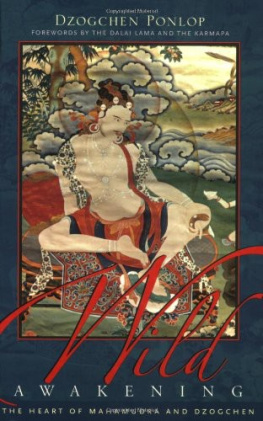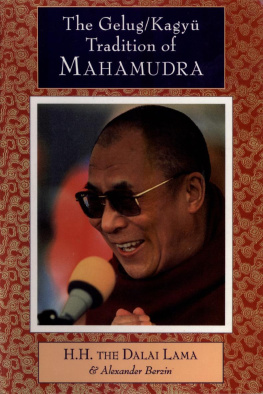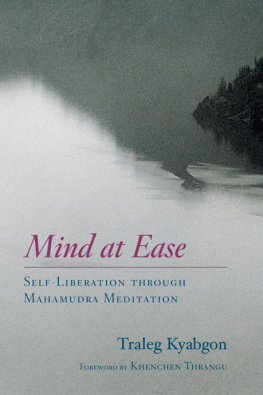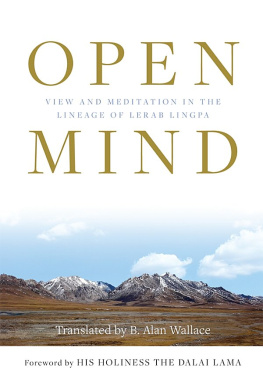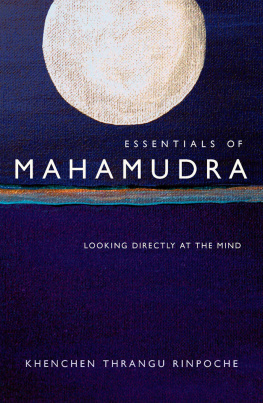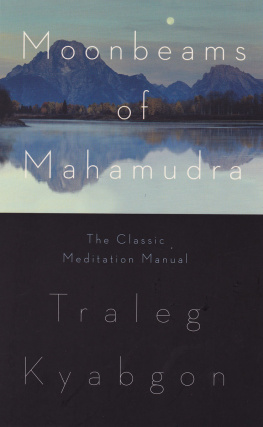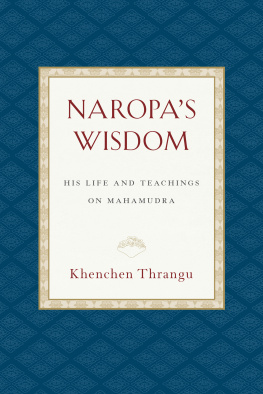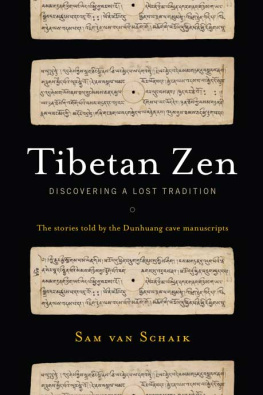Studies in Indian and Tibetan Buddhism
This series was conceived to provide a forum for publishing outstanding new contributions to scholarship on Indian and Tibetan Buddhism and also to make accessible seminal research not widely known outside a narrow specialist audience, including translations of appropriate monographs and collections of articles from other languages. The series strives to shed light on the Indic Buddhist traditions by exposing them to historical-critical inquiry, illuminating through contextualization and analysis these traditions unique heritage and the significance of their contribution to the worlds religious and philosophical achievements.
Members of the Editorial Board:
Tom Tillemans (co-chair), Emeritus, University of Lausanne
Jos Cabezn (co-chair), University of California, Santa Barbara
Georges Dreyfus, Williams College, Massachusetts
Janet Gyatso, Harvard University
Paul Harrison, Stanford University
Toni Huber, Humboldt University, Berlin
Shoryu Katsura, Ryukoku University, Kyoto
Thupten Jinpa Langri, Institute of Tibetan Classics, Montreal
Frank Reynolds, Emeritus, University of Chicago
Cristina Scherrer-Schaub, University of Lausanne
Ernst Steinkellner, Emeritus, University of Vienna
Leonard van der Kuijp, Harvard University

Roger Jacksons Mind Seeing Mind is an outstanding achievement, vast in scope and profound in its engagement with Tibetan Buddhist contemplative and philosophical traditions. From the origins of the Mahmudr teaching in India, through its refinement and development among the Kagy masters of Tibet, to its transmission to J Tsongkhapa and his Gelukpa successors down to the present day, Jackson guides the reader on a journey resembling the exploration of a great river from its turbulent headwaters to the spreading streams of its delta. Mind Seeing Mind is a model study of the historical and doctrinal literature of Buddhism in Tibet.
MATTHEW T. KAPSTEIN, cole Pratique des Hautes tudes, Paris, and the University of Chicago
A lifetime of study has gone into this immensely important volume, and it shows on every page. The best historical overview of Mahmudr available in any language, Mind Seeing Mind is also the definitive study of the Great Seal in the Geluk tradition. Erudite, yet accessible, it is a book no serious student of Buddhism can afford to overlook.
JOS IGNACIO CABEZN, Dalai Lama Professor of Tibetan Buddhism and Cultural Studies, UC Santa Barbara
The Mahmudr tradition of the New translation schools of Tibetan Buddhism and the cutting through teachings of the Dzokchen tradition of the Old translation school represent the pinnacle of the science of mind in Indo-Tibetan Buddhism. Roger Jackson has done us a great service in translating core Mahmudr texts from the Geluk tradition and contextualizing them within the broader framework of Tibetan Buddhism. This volume is worthy of close attention by contemplatives and scientists alike, for it is enormously relevant to understanding the mind in the modern world.
B. ALAN WALLACE, president, Santa Barbara Institute for Consciousness Studies
In Mind Seeing Mind Roger Jackson presents for the first time a comprehensive work on Geluk Mahmudr against its Indian and Tibetan background, investigating its history, doctrines, and practices from a critical scholarly standpoint. At the same time the work also contains multiple translations of Tibetan texts crucial to Geluk Mahmudr, which profit from Jacksons intimate acquaintance with the tradition. With this rare combination of skills, Jackson renders an enormous service for scholars and practitioners alike. It is a must-read for anyone interested in Geluk Mahmudr.
PROF. DR. KLAUS-DIETER MATHES, University of Vienna
Ed elli a me: Questa montagna tale,
che sempre al cominciar di sotto grave;
e quant om pi va s, en men fa male.
Per, quand ella te parr soave
tanto, che s andar ti fia leggero
com a seconda gi andar per nave,
allor sarai ad fin desto sentiero;
quivi di riposar laffanno aspetta.
Pi non rispondo, e quest so per vero.
And he to me: This mountain is such
that beginning from below is always hard;
and the higher you go, the less the affliction.
So, when it seems to you so gentle
that going up is as easy for you
as going downstream in a boat,
then youll reach the end of this path,
where rest from your troubles awaits.
More I cannot say, but this I know is true.
Dante, Purgatorio 4.8896

Know that nothing is established here,
so appearances have no essence.
Appearances free themselves into the realm of truth;
understanding frees itself into great awareness.
The nondual self-same Dharma body
is like a great rivers downward current:
whatever there is is beneficial.
This is eternal buddhahood,
great bliss beyond sasras realm.
Nropa, Verses Summarizing Mahmudr

To the memory of my parents, Margaret Reid Jackson (19182008) and Robert Edward Jackson (19252010), both of whom lovingly supported me in countless ways in life and now have opened the final seal and seen face to face what I can limn only through a dusky glass.
Publishers Acknowledgment
The publisher gratefully acknowledges the generous help of the Hershey Family Foundation in sponsoring the production of this book.
Contents
7. From Tsongkhapa to Pachen Chgyen:
Khedrup J and the Main Line of the Hearing Transmission
8. From Tsongkhapa to Pachen Chgyen:
Masters Outside the Main Line of the Hearing Transmission
1. Synopsis of the Spiritual Practice Taught by the Exalted Majughoa
Tsongkhapa Losang Drakpa
2. Bright Lamp of the Excellent Path: An Excerpt
Kachen Yesh Gyaltsen
4. Highway of the Conquerors
Pachen Losang Chkyi Gyaltsen
5. Lamp So Bright
Pachen Losang Chkyi Gyaltsen
6. The Hundred Deities of Tuita
Dulnakpa Palden Sangpo
7. The Bright Lamp of Mahmudr
Khedrup Norsang Gyatso
8. Offering to the Guru
Pachen Losang Chkyi Gyaltsen
9. The Crystal Mirror of Tenet Systems: Excerpts
Thuken Losang Chkyi Nyima
10. Poetic Expressions
Pachen Losang Chkyi Gyaltsen
Preface
W HEREVER YOU ARE reading this, pause for a moment and ask: Who or what is doing the reading? Who or what is doing the comprehending? One obvious answer to both questions is the mind. We usually think of the mind as intending this or that object, like the words on this page or the daydream we drift to when the words cant keep our interest. Now, though, step back from your minds usual preoccupations, take a few slow, deep breaths, and settle into the clear awareness that is mind itself. If thoughts appear, let them subside to their source, and relax again into awareness without content. When you have stabilized that calm, clear awareness, ask yourself what the true nature of this calm, clear awareness is. Where is it found? Is it in your body-mind as a whole? Particular parts of your body-mind? Your brain? A certain part of your brain? Your neurons? Your senses? The rise and fall of thoughts? The interrelation of thoughts? Thoughts at rest? Completely outside your body-mind? No matter where you look for the mind, you never arrive at an absolute point at which you can say, Ah, thats it! Not finding the mind may at first seem frustrating or even frightening, but when you understand that thats just the way it is, you can rest in that not-finding, in the clear, empty, aware state that is your natural mind, mind as it really is. Resting in the natural mind, you feel joyous, and so fulfilling is that joy that it spontaneously overflows the boundaries of your self and into concern for others, so that, brimming with wisdom and compassion, you return to the world in the old Zen expression with gift-bestowing hands.



